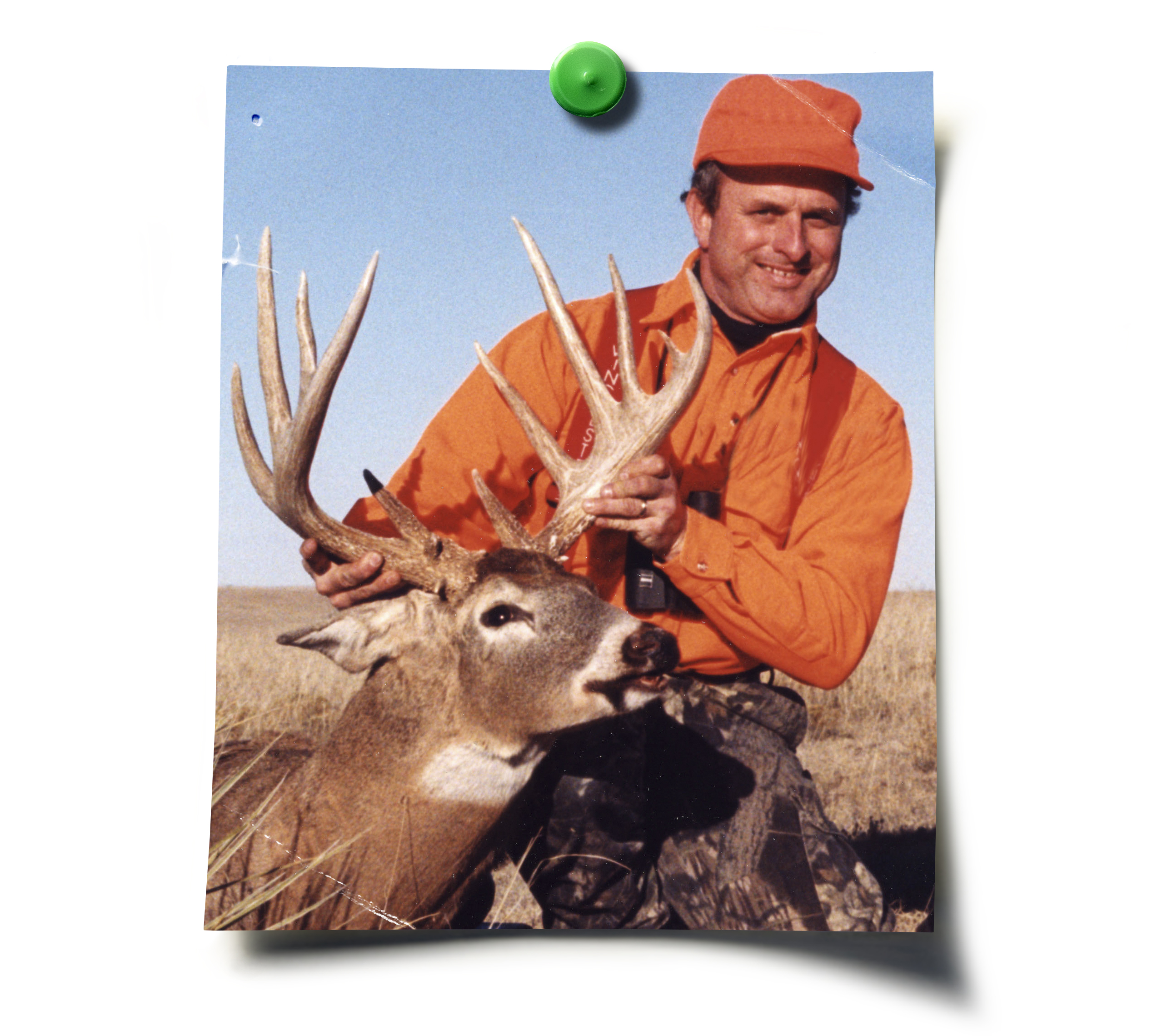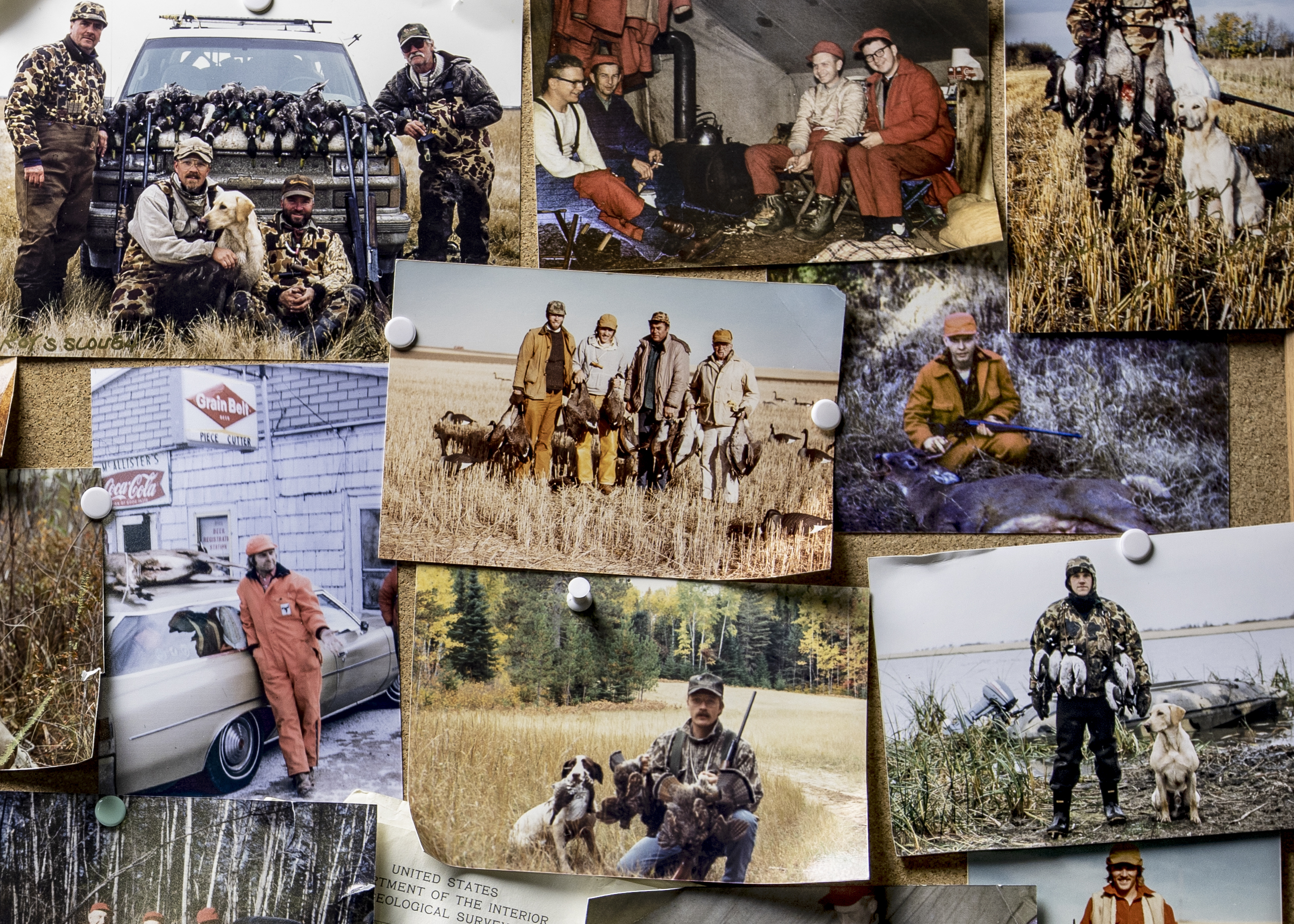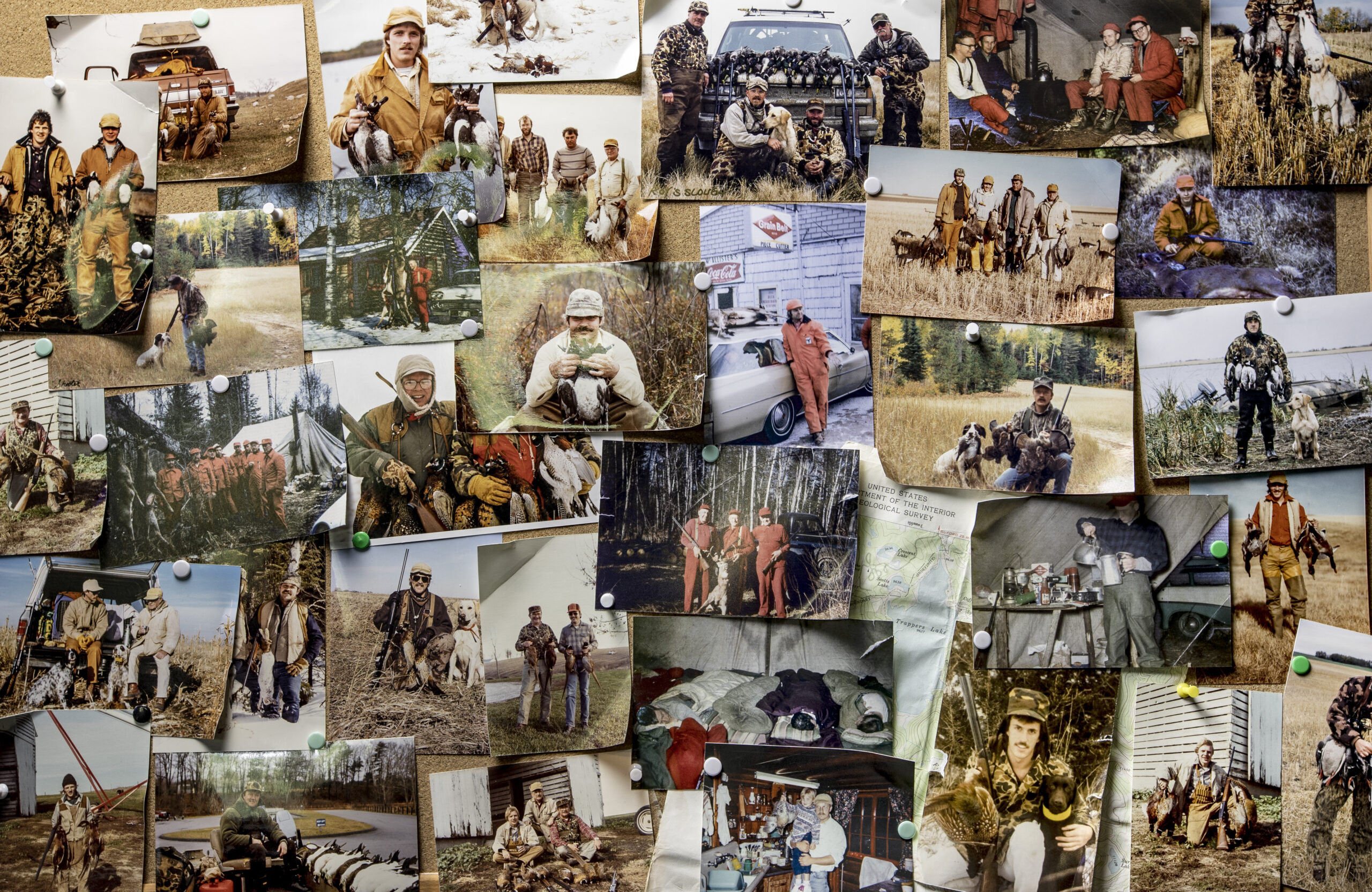MY FATHER wasn’t trying to ensure hunting’s future or even create a new hunter when he slid that Savage 24S-E in .22/.410 beneath our Christmas tree in 1971. Dad had quit hunting by the time I was 14, and honestly, he probably wasn’t the best teacher or role model to take me and my three brothers out for rabbits or squirrels. Dad was a crack shot, but he was impatient with hunting and its painstaking tactics.
Still, he had been a boy of the Great Depression, and Dad’s early years had instilled the necessities of marksmanship, fencerow rabbits, and freshly caught bullheads. He enlisted in the Army at age 17, as World War II ended.
So on that Christmas Day, Dad drove me outside town, handed me a cardboard box with a Magic Marker bull’s-eye, and told me to put it 30 yards away in the snowy woods. I then shot, first with the .22 barrel and then with the .410 bore. After we returned home, Dad handed me two new Hoppe’s cleaning kits, one for rifles and the other for shotguns. He showed me how to swab the barrels with nitro solvent and rub the exterior with light oil.
His mentoring tasks complete, Dad never again offered another hunting or shooting tip. Even so, with that little gun, my love and obsession for hunting grew. With neither intent nor forethought, Dad had recruited me into hunting’s largest demographic group: white males from families with rural or near-rural backgrounds, born between 1946 and 1964. We baby boomers swelled hunting’s ranks to record numbers by the 1980s, and by 1991 there were still more than 14 million estimated hunters in America.
Today, baby boomers are 56 to 75 years old. We’re no longer the majority of -America’s hunters, and our numbers are declining fast. Research shows folks typically retire from hunting around age 70, which means most of my generation will hang up our bows, rifles, and shotguns for good in the next 10 years, if we haven’t already.
I’m not all that sentimental about this. Baby boomers, after all, didn’t invent hunting. Hunters roamed North America eons before 1946, and they’ll keep roaming long after boomers and our heirs are gone. But my generation’s pending end prompts a question: What, exactly, is the legacy we’re leaving behind?
The Deer Boom
To answer that question, it’s important to understand how we got started. As kids, we boomers shot BB guns, watched Daniel Boone and Davy Crockett on TV, died daily atop imaginary Alamo walls, and quietly inspected unlocked guns and Remington Peters ammo we removed from our fathers’ Sears, Roebuck gun racks.
We mostly taught ourselves to hunt while envying friends whose fathers, uncles, and brothers also hunted. We weren’t farmers, but we bicycled often to farms and rural woodlots with our recurves or shotguns lashed to our rear baskets. We hunted those places until the landowners shooed us away for November’s gun season, but we returned in December after they again judged us harmless.
By the mid-1970s, we saw whitetail deer herds surge across the eastern two-thirds of the U.S. That explosion occurred quickly and mysteriously.

When I returned home from the Navy in 1980, after missing four years’ worth of deer seasons, I hunted the same woods as before, but I found a far different herd. It seemed the Department of Natural Resources had corralled the results of five years of whitetail reproduction onto one 100-acre woods.
A friend’s dad owned that property and invited me to hunt it after he counted 56 deer on opening morning and shot a -6-pointer before noon. Other friends made claims of 70 to 80 sightings that weekend, 10 times what I’d seen on opening weekend only five years before.
I didn’t shoot any of the many deer I saw in three days of hunting after Thanksgiving 1980, but only because the DNR hadn’t yet invented bonus antlerless tags. Once it did, my freezer was always full of venison.
With so many whitetails on the landscape, hunters adopted a range of beliefs about deer and their management. By the early 1990s, I was passing up yearling bucks regularly, filling free or cheap antlerless tags, and packing our freezers full of six deer each fall. Unfortunately for the herd and its habitat, most other hunters weren’t so eager to shoot does.
With bucks aplenty in the swollen herds, many hunters waited out “their” buck—any buck—and then shot it and went home. Others also ignored does and fawns, as well as yearling bucks, and proudly held out for a “150-class” buck. They pledged allegiance to QDM, and didn’t get the humor when asked if they meant “quantity,” not quality, deer management, which is what they achieved by refusing to shoot female deer.
The Gear Boom
That combination of surging deer herds and growing boomers sparked the mass production of compound bows, portable tree-stands, and anodized aluminum arrows throughout the 1970s. We boomers weren’t wealthy individually, but collectively we squirreled away fortunes to fund outdoor store layaway programs.
Throughout the 1980s, manufacturers made increasingly fast bows, better-performing bullets, more convincing camouflage, clearer and brighter riflescopes, and warmer and drier hunting clothes. Hunters also began driving ATVs and building increasingly tall and cushy box stands. Hunting media boomed too, with hunters renting VHS tapes and buying three-year subscriptions to a variety of different hunting magazines.
Whitetails kept pace, overwhelming farmers from North Dakota to Georgia.
Hunting gear kept improving and multiplying through the 1990s, with calls, grunt tubes, rangefinders, rattling devices, GPS units, pop-up ground blinds, big-game decoys, inline muzzleloaders, and much, much more. Boomers were there for it all.
Maybe I’m a product of my generation, as I still use much of that gear today and especially like the better boots and clothes, which keep me happier on stand in all weather. I also admire the straight-shooting bows and broadheads, which consistently deliver cleaner kills and clearer consciences.
But what about all those gadgets, the ones that Aldo Leopold warned about in the 1940s? Aldo called them “aids to self-reliance, hardihood, woodcraft, or marksmanship, but too often functioning as substitutes for them” and claimed their “aggregate poundage becomes tonnage” when hunters go afield.
I hold no man in higher regard than Leopold, a member of the Lost Generation, but he overstated things. Yes, hunting’s gadgeteers are making more toys than ever 75 years post-Leopold, but hunters often limit their “tonnage,” quickly abandoning gear that is useless. Also, I haven’t found much evidence that our gadgetry provides an unfair advantage over the game we hunt or makes it difficult for game agencies to regulate harvests.

Hunting’s Monoculture
We boomers excelled at creating and maintaining hunting gear, but we flopped at creating and sustaining new hunters. As early as the late 1980s, industry analysts, university sociologists, and wildlife agency administrators knew our children weren’t following us afield at the pace we’d once set. When demographers plotted hunters’ birth years and projected them on graphs, the baby boomer bulge moved like a basketball through a python. What would happen when hunting’s dominant generation passed on?
A rural sociologist at the University of Wisconsin-Madison in 1991 warned of big changes. Professor Tom Heberlein said “hunting as we know it” in Wisconsin could cease by 2050. He speculated the state might have to manage its deer herd with 100,000 well-trained animal control officers.
Heberlein, however, said his “straight-line projection” of declining hunter numbers wasn’t a prediction, given the unknowns of future technology, social trends, and natural events. Still, all evidence in 1991 showed hunting interest had peaked with the then-middle-aged boomers and would only fall as they aged, became more urban and white collar, and led smaller, less structured families.
Most media outlets skipped such nuance and caveats as Heberlein’s warning generated national headlines and debates.
Meanwhile, wildlife agencies and universities wondered how institutions would fund habitat work, scientific studies, and hunting programs. They were learning firsthand the risks of relying on one type of crop for survival. In effect, hunting’s boom had relied on four specific elements:
- Whitetail deer
- White male baby boomers
- Hunting license fees paid by those boomers
- Federal excise taxes on guns, ammo, and archery gear
A 2016 analysis by the U.S. Fish and Wildlife Service underscored the whitetail’s dominance. It showed that of the nation’s documented 13.7 million hunters in 2011, 79 percent (10.9 million) were deer hunters, primarily whitetail hunters. Although the accuracy of this oft-cited survey is unclear, it’s the best data we currently have for understanding national hunting trends.
While hunting depended on whitetails for a species, it depended even more heavily on white males for participants. Roughly 10 percent of U.S. hunters today are female, but they form a slow-growing group with great “churn,” meaning they move in and out of hunting’s ranks at higher rates than males.
And of the 11.5 million Americans who hunted in 2016, 96 percent (11.1 million) were white.
In addition, even though states fund wildlife programs largely with license fees, sales of hunting licenses across much of the eastern two-thirds of the U.S. are declining, even though few states have raised prices. Western states are keeping resident fees modest, but regularly jab nonresidents with license prices 10 times higher than what residents pay.
The agencies’ other chief funding source is the federal excise taxes levied under the Pittman-Robertson Act on sales of ammo and firearms for hunting, self-defense, and recreational shooting. Many of today’s popular products didn’t exist when hunting boomed a half-century ago, and the P-R Act hasn’t been updated since Fred Bear and the archery industry persuaded Congress to impose excise taxes on bows, arrows, and accessories in 1972. Therefore, sales of scents, decoys, ATVs, tree-stands, hunting optics, rangefinders, trail cameras, ground blinds, game calls, GPS-driven smartphone apps, and high-tech clothing and footwear don’t -contribute to conservation.
Endeavor to Persevere
Despite the challenges, I’m hopeful for the future of post-boomer hunting. Today, many younger hunters are just as hardcore as any grizzled boomer. Serious hunters, no matter their age, aren’t easily discouraged. We boomers eagerly toughed out state-mandated age requirements, some of which still stand, that forbade youngsters to hunt until ages 12, 14, or 16. And some fathers didn’t welcome boomers to deer camp until high school or after.
“It was an honor to finally go to deer camp at 17 or 18,” says Rich Stedman, a rural sociologist at Cornell University and chairman of the school’s Department of Natural Resources and the Environment. Even though Stedman is a Gen Xer by two years, he hunts mostly with an older generation.
“There was something masculine about an early-1980s deer camp,” Stedman says. “I was finally grown up enough to hunt with the men who survived a world war and the Great Depression. The boomers’ parents had a sense of optimism, a deep belief they could do the hard things. In comparison, our lives were relatively easy, so when we finally got to hunt with them, we tried hard to make the grade.”
Stedman and his group cherished deer camp, and he laments the fading -multigenerational-deer-camp traditions but says it’s not the last institution that hunting will spawn, alter, or abandon.
“I still feel connections to our camp, but I’m also haunted by its ghosts,” Stedman says. “It’s the repository of many stories that make you who you are. The flip side is that almost all those men are now gone. It’s time to make new memories, but I can’t make my kids see deer camp through my eyes. They don’t buy into challenges I welcomed. New things jar some of my traditions, but that’s how things change.”
What Lies Ahead?
Will hunting’s younger generations find ways to fund the nation’s conservation programs with fewer hunters? Will they agree to pay more themselves, lobby for broader funding systems, or insist on both? Stedman, Caren Cooper, and other Cornell researchers found in 2015 that hunters, bird-watchers, and other nature-based outdoor recreationists were four to five times more likely than nonrecreationists to donate to conservation and wildlife initiatives.
Even so, Congress and voters haven’t tried to expand the Pittman-Robertson Act beyond ammo, firearms, and archery for more than 50 years. Likewise, bird-watchers and other “nonconsumptive” recreationists fight suggestions to include binoculars, birdseed, bird feeders, or camping gear in the P-R Act.
Future generations of hunters might also have to broaden their passions beyond whitetails, whose overabundance in many areas has caused extensive over-browsing for the past 20 years, reducing the land’s carrying capacity. Meanwhile, chronic wasting disease has increased slowly but steadily, and if researchers are right, CWD-infected herds will decline without reductions in hunting harvest.
Will hunters then focus more on small-game species? Yes, history suggests. Even though deer dominated the boomers’ era, most boomers learned the craft by hunting small game and “graduating” to deer. Not until whitetails became so numerous in the 1980s and ’90s did most beginners start with deer.
Changes and Challenges
Most importantly, the hunting community will need to broaden its population. Family-driven hunter “recruitment” has fallen short, says Wisconsin’s Christine Thomas, former dean of the College of Natural Resources at UW Stevens Point and founder of the Becoming an Outdoors-Woman program. Thomas says programs like BOW help fill voids, and she predicts more women will populate hunting’s ranks. So does Linda Bylander, who coordinates Minnesota’s BOW program.
“Our students are typically women who are just getting done with young-child–rearing duties, so they’re often between 30 and 40,” she says. “They want to hunt, and they like the locavore movement.”
Likewise, a 2020 nationwide study of university students found that potential hunters, compared to active hunters, were more likely to be women or racial/ethnic minorities and less likely to have social support for hunting.
Rue Mapp, founder and CEO of Outdoor Afro, and Jimmy Flatt, Lydia Parker, and Thomas Tyner, co-founders of Hunters of Color, are helping to drive the conversation. They say many Blacks, Hispanics, Native Americans, and members of other ethnic groups are intrigued by hunting. Few come from hunting families, however, so few can ask relatives or friends for help.
“If you separate people for one generation from anything, it’s hard for them to reacquire those skills,” Parker says. “You can learn some things by reading and watching YouTube videos, but you need repetitive lessons with others who hunt regularly. By matching our members with mentors and trying to create surrogate families, we hope to get beyond the R3 programs. We want hunting’s participation rates to eventually match society’s demographics.”
Mapp has similar hopes but emphasizes she doesn’t want hunting to be colorblind.
“I’d like it to be an American quilt, where each person is a patch sewn together into one community,” she says. “Hunting unites us.”
Full Circle
New York’s Jim Tantillo is a baby boomer and Cornell University professor who teaches environmental ethics and history and the philosophy and morality of hunting. He thinks hunting will likely benefit from the many programs now trying to recruit hunters.
“These programs help us learn which paths are closing and which ones are widening for hunters,” Tantillo says. -“Banquet-based fundraisers and the traditional hunter-education model are probably past their expiration dates. No one should’ve thought they’d work forever.
“This perception that we need to recruit hunters is new, but hunting is as old as mankind,” Tantillo continues. “I’m optimistic about hunting because Americans always turn to it as a way to be in the outdoors. Each generation finds its way.”
This story originally ran in the Traditions issue of Outdoor Life. Read more OL+ stories.
